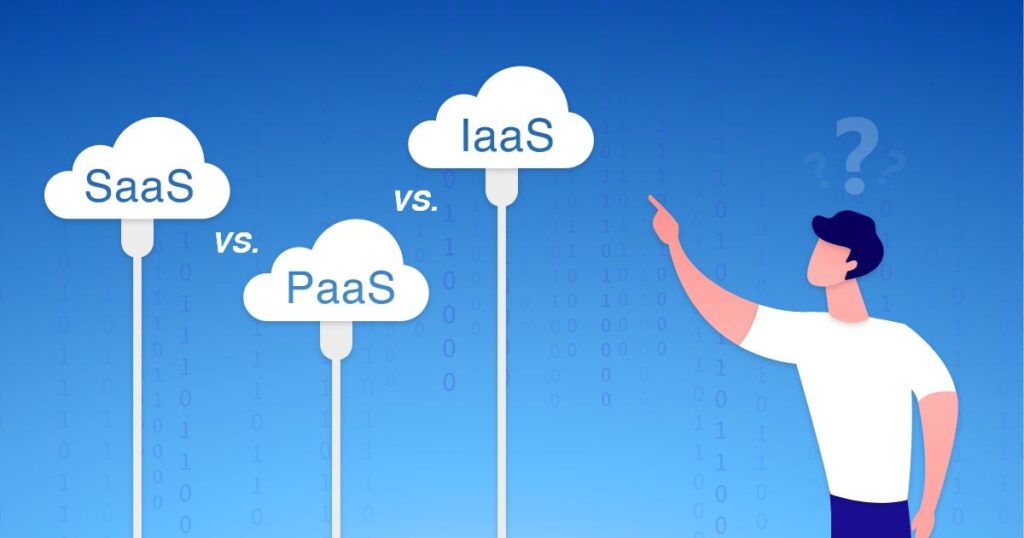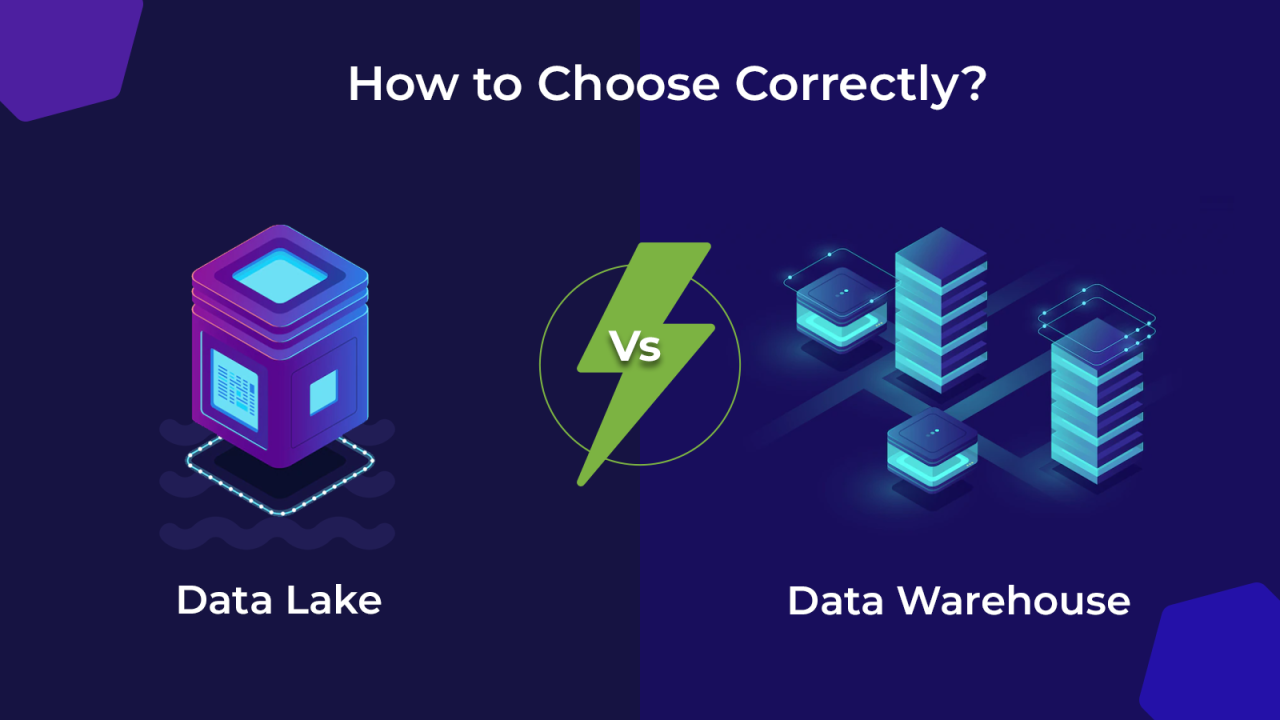In the dynamic landscape of modern software development, the quest for speed, efficiency, and seamless deployment is ceaseless. Central to this pursuit is Platform as a Service (PaaS), a cloud computing model that fundamentally transforms how applications are built, run, and managed. By abstracting away the complexities of underlying infrastructure—servers, operating systems, networking, and even some middleware—PaaS empowers developers to focus almost entirely on writing code and innovating. It’s more than just a convenient service; it’s a strategic enabler that dramatically boosts developer productivity, accelerates time-to-market, and streamlines operations. PaaS is undeniably unleashing developer potential, allowing them to create and deliver value with unprecedented speed and focus.
The Evolution of Application Hosting: From Bare Metal to PaaS
To fully appreciate the impact and benefits of PaaS, it’s essential to understand its place in the historical progression of application hosting and infrastructure management. Each stage brought increased abstraction and efficiency, yet also new challenges.
A. Traditional On-Premises Hosting: The Full Burden
Historically, organizations deployed applications on their own physical servers within private data centers. This “bare metal” approach offered maximum control but came with immense operational overhead.
- High Capital Expenditure (CapEx): Significant upfront investment was required for purchasing servers, networking equipment, storage devices, and establishing a robust data center environment (power, cooling, physical security).
- Extensive Operational Burden: IT teams were responsible for every layer of the stack: hardware maintenance, operating system installation and patching, network configuration, middleware setup, database management, and application deployment. This was a time-consuming and labor-intensive process.
- Limited Scalability and Agility: Scaling required procuring and provisioning new physical hardware, which could take weeks or months. This inherent lack of elasticity made it difficult to respond quickly to fluctuating demand or to rapidly deploy new applications.
- Disaster Recovery Complexity: Implementing robust disaster recovery (DR) solutions meant replicating entire data centers, which was prohibitively expensive and complex for most organizations.
B. Virtual Machines (VMs) and Infrastructure as a Service (IaaS)
The advent of virtualization and subsequently Infrastructure as a Service (IaaS) marked a significant step forward by abstracting the physical hardware.
- Virtualization: Allowed multiple isolated virtual machines (VMs) to run on a single physical server, improving resource utilization. This provided more flexibility than bare metal.
- Infrastructure as a Service (IaaS): Cloud providers (e.g., AWS EC2, Azure VMs, Google Compute Engine) offered virtualized compute, storage, and networking resources over the internet. Users could provision VMs on demand, paying only for what they used.
- Reduced CapEx: IaaS eliminated the need for upfront hardware purchases, shifting IT spending from CapEx to OpEx (Operational Expenditure).
- Improved Scalability (Manual): While VMs could be provisioned faster than physical servers, scaling still often involved manual intervention to set up new VMs, install operating systems, and configure software. Developers still bore significant responsibility for the underlying OS and middleware.
C. Containers and Container as a Service (CaaS)
Containers (e.g., Docker) revolutionized application packaging and deployment by providing lightweight, portable, and consistent environments.
- Application Portability: Containers package an application and all its dependencies into a single, isolated unit, ensuring it runs consistently across different environments (developer laptop, testing server, production).
- Efficient Resource Utilization: Containers share the host OS kernel, making them much lighter and faster to start than VMs, leading to higher density per server.
- Container Orchestration (e.g., Kubernetes): Tools like Kubernetes emerged to manage large-scale container deployments, automating scaling, self-healing, and load balancing of containerized applications.
- Container as a Service (CaaS): Cloud providers offer managed Kubernetes services (e.g., AWS EKS, Azure AKS, Google GKE), offloading the management of the Kubernetes control plane from users. While CaaS reduces some operational burden, developers still manage container images, underlying OS issues within the containers, and some cluster configurations.
D. Platform as a Service (PaaS): The Developer’s Dream
PaaS represents the next level of abstraction, fundamentally changing the developer’s role by taking on almost all infrastructure management.
- Full Infrastructure Abstraction: PaaS environments provide a complete platform for developing, running, and managing applications without the developer ever needing to manage servers, operating systems, or even the underlying container orchestration directly.
- Focus on Code: Developers simply upload their application code (or link to a code repository), and the PaaS handles everything else: provisioning resources, deploying, scaling, load balancing, applying patches, and managing middleware.
- Built-in Services: PaaS often comes with integrated services like databases, message queues, caching, and authentication mechanisms, streamlining the development process.
- Automatic Scaling: PaaS platforms automatically scale applications up or down based on demand, ensuring consistent performance without manual intervention.
This journey highlights a continuous drive towards greater abstraction, aiming to free developers from infrastructure concerns and allow them to focus on innovation – a core promise that PaaS delivers upon.
Core Principles and Characteristics of PaaS
PaaS solutions are defined by several key principles and characteristics that empower developers and streamline the application lifecycle.
A. Complete Infrastructure Abstraction
The most defining feature of PaaS is the near-total abstraction of underlying infrastructure. Developers are freed from the responsibility of managing:
- Servers: No provisioning, patching, or scaling of physical or virtual machines.
- Operating Systems: No OS installation, configuration, or security updates.
- Networking: No manual configuration of load balancers, firewalls, or routing.
- Middleware: No installation or management of web servers, application servers, or message brokers.
This abstraction allows developers to concentrate solely on writing application logic.
B. Integrated Development and Deployment Environment
PaaS provides a cohesive, ready-to-use environment for the entire application lifecycle.
- Pre-configured Runtimes: Support for various programming languages and their respective runtimes (e.g., Node.js, Python, Java, .NET, Ruby, PHP) is typically built-in and managed.
- Simplified Deployment: Developers often deploy by simply pushing code to a Git repository, using a CLI command, or connecting to an IDE plugin. The platform handles compilation, dependency resolution, and deployment to the runtime environment.
- Built-in CI/CD Capabilities: Many PaaS offerings include integrated CI/CD pipelines, allowing for automated builds, testing, and deployments directly within the platform.
- Monitoring and Logging: Comprehensive monitoring tools, logging services, and analytics dashboards are typically part of the PaaS offering, providing visibility into application performance without requiring separate setup.
C. Automatic Scaling and Resource Management
PaaS platforms inherently handle the dynamic allocation and scaling of resources based on demand.
- Elasticity: Applications automatically scale up (add more instances) during traffic spikes and scale down (reduce instances) during low demand, ensuring consistent performance and optimal resource utilization.
- Load Balancing: Traffic is automatically distributed across multiple application instances, ensuring high availability and preventing any single point of failure.
- Self-Healing: If an application instance fails, the PaaS platform automatically detects it and replaces it with a new, healthy instance, ensuring application resilience.
- Automated Resource Provisioning: The platform dynamically provisions and de-provisions underlying compute, memory, and storage resources as needed by the application, based on configured scaling rules or intelligent algorithms.
D. Integrated Services and Ecosystem
PaaS typically offers a suite of integrated services that developers can readily consume.
- Managed Databases: Easy access to managed relational (e.g., PostgreSQL, MySQL) and NoSQL databases (e.g., MongoDB, Redis), reducing the burden of database administration.
- Messaging and Caching: Integrated message queues, event brokers, and in-memory caching services to build resilient, scalable, and high-performance applications.
- Authentication and Authorization: Built-in identity management and security features that simplify user authentication and access control.
- APIs and SDKs: Comprehensive APIs and Software Development Kits (SDKs) to programmatically interact with the PaaS and its integrated services, allowing for automation and customization.
E. ‘Pay-as-You-Go’ or Consumption-Based Billing
Similar to other cloud services, PaaS often operates on a consumption-based pricing model.
- Resource-Based Billing: Users are typically charged based on the resources consumed by their applications (e.g., compute hours, memory usage, data transfer, number of requests), rather than fixed infrastructure costs.
- Cost Optimization: The automatic scaling and pay-as-you-go model lead to significant cost optimization, especially for applications with fluctuating or unpredictable workloads, as users don’t pay for idle capacity.
- Predictable Spending: While consumption-based, monitoring tools within the PaaS help track usage and predict spending, allowing for better budget management.
These characteristics collectively enable a highly productive environment where developers can truly focus on their core competency: building innovative software solutions.
Transformative Advantages of Embracing PaaS
Adopting a PaaS model delivers a multitude of powerful benefits that directly impact an organization’s bottom line, agility, and competitive edge.
A. Unleashed Developer Productivity
This is the most direct and compelling advantage of PaaS. By abstracting infrastructure complexities, PaaS empowers developers to be significantly more productive.
- Focus on Core Logic: Developers spend virtually no time on infrastructure provisioning, configuration, patching, or scaling. Their entire focus shifts to writing, testing, and iterating on application code that delivers direct business value.
- Faster Development Cycles: The ready-to-use environments and integrated tools (runtimes, databases, deployment pipelines) drastically reduce setup time and common development hurdles, accelerating the entire development lifecycle.
- Reduced Context Switching: Developers don’t need to constantly switch between coding tasks and infrastructure management tasks, maintaining flow state and improving efficiency.
- Simplified Collaboration: Teams can quickly onboard new developers, as the environment setup is automated and consistent, allowing them to contribute code almost immediately.
B. Accelerated Time-to-Market
The speed gained in development directly translates to how quickly new applications and features can be delivered to users.
- Rapid Deployment: The automated deployment pipelines within PaaS allow for code changes to go from commit to production in minutes, enabling continuous delivery and faster feature rollouts.
- Quick Prototyping: Developers can rapidly spin up new environments for prototyping and testing ideas, accelerating the innovation cycle and allowing for faster validation of concepts.
- Agile Response to Market Demands: Businesses can respond swiftly to market shifts, competitor moves, or customer feedback by quickly deploying updates and new functionalities, gaining a crucial competitive advantage.
C. Significant Cost Savings and Optimization
While PaaS comes with service fees, the overall economic benefits often outweigh traditional models due to various factors.
- Reduced Operational Expenses (OpEx): Eliminating the need for dedicated teams to manage infrastructure (servers, OS, middleware) drastically reduces labor costs and operational overhead.
- Optimized Resource Utilization: Automatic scaling ensures that you only pay for the compute resources your application actively consumes, eliminating costs associated with idle server capacity or over-provisioning.
- No Capital Expenditure (CapEx): PaaS is entirely OpEx, freeing up capital that would otherwise be tied up in hardware purchases.
- Predictable Cost Management: While usage-based, the comprehensive monitoring tools and cost-optimization features within PaaS help manage and predict spending effectively.
D. Enhanced Scalability and Reliability
PaaS platforms are designed from the ground up to offer high levels of scalability, reliability, and resilience.
- Automatic Scaling: Applications effortlessly handle sudden traffic spikes and fluctuations, maintaining performance without manual intervention, ensuring a consistent user experience.
- Built-in High Availability: PaaS offerings typically distribute applications across multiple availability zones and automatically manage failovers, ensuring high uptime and resilience against underlying infrastructure failures.
- Self-Healing Capabilities: The platform can automatically detect and replace unhealthy application instances, minimizing downtime and ensuring continuous service availability.
- Load Balancing: Traffic is automatically distributed, ensuring no single instance is overloaded, leading to better performance and stability.
E. Improved Security Posture
While security remains a shared responsibility, PaaS providers manage a significant portion of the security burden.
- Managed Infrastructure Security: The cloud provider is responsible for securing the underlying physical infrastructure, networking, and hypervisors, continuously patching and updating them.
- Built-in Security Features: PaaS often includes integrated security features like identity and access management (IAM), network isolation, encryption for data in transit and at rest, and vulnerability scanning for the platform itself.
- Compliance Certifications: Major PaaS providers adhere to a wide range of industry compliance standards (e.g., ISO 27001, SOC 2, HIPAA, GDPR), simplifying compliance efforts for applications deployed on their platform.
F. Simplified Operations and Maintenance
The abstraction inherent in PaaS significantly simplifies day-to-day operational tasks for IT teams.
- Automated Patching and Updates: The platform automatically handles OS patching, runtime updates, and middleware maintenance, reducing the burden on operations teams.
- Centralized Monitoring and Logging: Integrated dashboards provide comprehensive insights into application performance, errors, and resource usage, streamlining troubleshooting.
- Reduced Configuration Drift: Since environments are provisioned and managed by the platform based on declarative configurations, the risk of configuration drift between development, staging, and production environments is minimized.
Key Use Cases and Applications of PaaS
PaaS is a versatile computing model suited for a wide array of applications and development scenarios, offering specific advantages in various contexts.
A. Web Applications and APIs
PaaS is ideally suited for developing and deploying scalable web applications and RESTful APIs, from simple websites to complex enterprise applications.
- Rapid Deployment of Web Apps: Developers can quickly deploy front-end and back-end web applications without managing web servers or application servers, ideal for agile development.
- Scalable APIs: Building and scaling APIs that serve mobile apps, single-page applications (SPAs), or microservices architectures becomes straightforward, as the platform handles traffic management and scaling.
- E-commerce Platforms: Many e-commerce solutions leverage PaaS for their backend logic, ensuring they can handle fluctuating traffic during sales events.
B. Microservices Architectures
PaaS provides an excellent environment for building and deploying microservices, given its emphasis on independent scaling and component decoupling.
- Independent Service Deployment: Each microservice can be deployed as a separate application on the PaaS, allowing for independent development, scaling, and updates.
- Simplified Orchestration: While developers don’t manage Kubernetes directly, PaaS often uses container orchestration under the hood, providing the benefits of containerization without the complexity.
- Built-in Service Discovery and Communication: PaaS platforms often provide simplified mechanisms for microservices to discover and communicate with each other.
C. Mobile Backends
Developing the backend infrastructure for mobile applications is a strong use case for PaaS.
- Scalable API Endpoints: Providing highly available and scalable API endpoints for mobile apps to consume data and functionalities.
- Push Notifications: Integration with managed push notification services to engage mobile users.
- Authentication and User Management: Leveraging built-in identity management services to simplify user onboarding and security for mobile apps.
D. Rapid Prototyping and MVP Development
PaaS is invaluable for quickly building and testing new ideas or Minimum Viable Products (MVPs).
- Quick Environment Setup: Developers can spin up a fully configured development environment in minutes, allowing them to focus immediately on coding the core functionality of a prototype.
- Fast Iteration: The simplified deployment process enables rapid iteration and testing of new features, accelerating the feedback loop and time to market for new products.
- Cost-Effective Experimentation: The pay-as-you-go model makes it cost-effective to experiment with new ideas, as you only pay for resources consumed during development and testing.
E. Business Process Automation and Integration
PaaS can be used to build custom applications that automate internal business processes or integrate disparate systems.
- Custom Workflow Applications: Developing applications that streamline specific business workflows, from approval processes to data synchronization between different enterprise systems.
- API Integration Hubs: Creating centralized platforms for integrating various third-party APIs and internal systems, simplifying complex data flows.
F. Data Processing and Analytics Backends
While specialized analytics platforms exist, PaaS can host custom applications for data ingestion, processing, and analysis.
- Data Ingestion APIs: Building APIs to ingest large volumes of data from various sources.
- Background Processing: Running long-running data processing jobs asynchronously, scaled by the PaaS platform.
- Real-time Analytics Backends: Powering real-time dashboards and analytics applications by connecting to managed databases and streaming services.
Challenges and Considerations in PaaS Adoption
While PaaS offers compelling advantages, organizations must be aware of potential challenges and make informed decisions during its adoption.
A. Vendor Lock-in
One of the most frequently cited concerns with PaaS is vendor lock-in.
- Proprietary Services: Each cloud provider’s PaaS offering has unique APIs, integrated services, and deployment models. Applications built heavily relying on these proprietary features can be difficult and costly to migrate to another provider’s PaaS or to an on-premise environment.
- Solution: While complete vendor neutrality is often impractical, mitigating lock-in can involve designing applications with clear service boundaries, using open standards where possible, and encapsulating vendor-specific code.
B. Less Granular Control
The high level of abstraction that makes PaaS so powerful also means less granular control over the underlying infrastructure.
- Operating System Access: Developers typically don’t have direct access to the underlying operating system or network configurations. This can be a limitation for applications requiring highly customized environments, specific kernel modules, or low-level performance tuning.
- Debugging Limitations: While PaaS provides monitoring, debugging deeply integrated system-level issues can be challenging without direct infrastructure access.
- Solution: Organizations must assess if their application’s specific requirements align with the level of control offered by a PaaS. For highly specialized workloads, IaaS or CaaS might be more suitable.
C. Runtime and Language Limitations
PaaS offerings provide pre-configured runtimes for popular languages, but they may not support every programming language, version, or specific framework. This can be a limitation for legacy applications or those built with niche technologies.
- Solution: Check the supported runtimes and versions carefully. For unsupported environments, containerization (CaaS) or IaaS provides more flexibility.
D. Pricing Complexity (for High Usage)
While generally cost-effective, the consumption-based pricing models can become complex to predict for very high-usage or highly fluctuating applications. Unoptimized code or unintended usage spikes can lead to unexpected costs.
- Solution: Implement robust monitoring and alerting for resource consumption. Regularly review usage patterns and optimize application code for efficiency. Leverage cost management tools provided by the cloud vendor.
E. Security Shared Responsibility (Still Critical)
While PaaS providers secure the underlying platform, users remain responsible for security of their applications.
- Application Code Vulnerabilities: Developers are still responsible for writing secure code and managing vulnerabilities within their application logic.
- Data Security: Protecting data stored in databases, managing access controls, and ensuring data encryption (at rest and in transit) is the user’s responsibility.
- Configuration Security: Securely configuring the PaaS services themselves (e.g., proper network policies, IAM roles, API key management).
- Solution: Implement DevSecOps practices within your development workflow, including SAST, DAST, SCA, and rigorous security testing of your application code and configurations.
F. Integration with Existing Enterprise Systems
Integrating PaaS-deployed applications with existing on-premise enterprise systems (e.g., ERP, CRM, legacy databases) can sometimes pose integration challenges, requiring secure VPNs, API gateways, or specialized integration services.
- Solution: Plan your integration strategy carefully, leveraging cloud provider integration services, API management, and robust networking solutions.
Best Practices for Maximizing PaaS Value
To fully leverage the power of PaaS and mitigate its challenges, organizations should adopt a strategic approach and adhere to key best practices.
A. Clearly Define Application Requirements and Constraints
Before choosing a PaaS, conduct a thorough analysis of your application’s functional and non-functional requirements. Understand its scalability needs, performance expectations, security mandates, data residency requirements, and any specific low-level infrastructure dependencies. This ensures that the chosen PaaS truly aligns with your application’s unique needs and avoids future limitations.
B. Design for Cloud Native Principles and Loose Coupling
Maximize PaaS benefits by designing applications that embrace cloud-native principles.
- Microservices Architecture: Break down applications into small, independently deployable microservices. This aligns perfectly with PaaS’s scaling and deployment capabilities.
- Stateless Design: Design application components to be stateless, externalizing session management and persistent data to managed database or caching services. This allows for easier scaling and resilience.
- Event-Driven Architectures: Leverage message queues and event brokers provided by the PaaS to build loosely coupled, asynchronous, and resilient applications.
C. Leverage Managed Services Extensively
Don’t reinvent the wheel. Utilize the wide array of managed services offered by the PaaS provider (e.g., managed databases, message queues, caching, authentication, content delivery networks). These services offload operational burden, provide built-in scalability and high availability, and often come with enterprise-grade security and compliance.
D. Implement Robust CI/CD Pipelines
Automate your development and deployment workflows.
- Continuous Integration (CI): Integrate code changes frequently, running automated tests (unit, integration, functional) on every commit.
- Continuous Deployment (CD): Automate the deployment of validated code to staging and production environments directly from your version control system (e.g., Git). Many PaaS offerings have built-in CI/CD tools, or you can integrate external ones like Jenkins, GitLab CI, or GitHub Actions.
E. Prioritize Observability and Monitoring
You can’t optimize what you don’t measure.
- Comprehensive Monitoring: Leverage the PaaS’s integrated monitoring tools to collect metrics (CPU, memory, request rates, latency) and performance indicators for your applications.
- Centralized Logging: Ensure all application logs are aggregated and sent to a centralized logging system (either within the PaaS or an external solution) for analysis and troubleshooting.
- Distributed Tracing: For microservices, implement distributed tracing (e.g., OpenTelemetry) to track requests across multiple services and pinpoint performance bottlenecks or errors.
- Alerting: Configure proactive alerts for critical thresholds or anomalies to enable rapid incident response.
F. Implement Strong Security Practices (DevSecOps)
While the provider handles infrastructure security, your application’s security is paramount.
- Secure Coding Practices: Train developers in secure coding guidelines and conduct regular security code reviews.
- Automated Security Testing: Integrate SAST, SCA, and DAST tools into your CI/CD pipeline to identify vulnerabilities early.
- Granular Access Control: Implement the principle of least privilege using the PaaS’s IAM features to control access to your applications and underlying resources.
- Data Encryption: Ensure all sensitive data is encrypted at rest and in transit, leveraging the PaaS’s encryption capabilities.
- Secret Management: Use secure secret management services to store and retrieve sensitive credentials.
G. Optimize for Cost Efficiency Continuously
PaaS’s consumption-based model requires continuous cost management.
- Right-Sizing: Regularly review application resource consumption and adjust configurations (e.g., memory limits, CPU allocations) to avoid over-provisioning.
- Scaling Configuration: Fine-tune auto-scaling rules to ensure efficient scaling up and down based on actual demand patterns.
- Monitoring Spending: Utilize the cloud provider’s cost management dashboards and set up budget alerts to track and control expenditure.
- Leverage Pricing Tiers: Understand and utilize different pricing tiers or savings plans offered by the PaaS provider for predictable workloads.
H. Plan for Disaster Recovery and Business Continuity
Even with built-in high availability, plan for disaster recovery.
- Data Backups: Configure automated backups for your managed databases and application data, ensuring they are stored securely and redundantly.
- Cross-Region Deployment (if critical): For mission-critical applications, consider deploying across multiple geographical regions and implement active-active or active-passive failover strategies.
- Recovery Time Objective (RTO) and Recovery Point Objective (RPO): Define clear RTO and RPO targets and test your disaster recovery plan regularly.
The Future Trajectory of PaaS
The PaaS landscape is dynamic, constantly evolving to meet the demands of emerging technologies and complex application architectures. Its future promises even greater intelligence, integration, and developer empowerment.
A. Hyper-Converged PaaS (PaaS 2.0)
Future PaaS platforms will move towards even higher levels of convergence, offering a truly integrated developer experience.
- Beyond FaaS and Containers: Seamlessly combining serverless functions, managed containers, and potentially even specialized compute (e.g., WebAssembly runtimes) under a single, unified abstraction, allowing developers to choose the best compute model for each microservice without managing underlying infrastructure.
- Integrated AI/ML Capabilities: Deep integration of AI/ML model training, deployment, and inference capabilities directly into the PaaS, allowing developers to build intelligent applications with minimal effort.
- Data as a Service (DaaS) Integration: Even more sophisticated, managed data services that go beyond simple databases, offering data lakes, streaming analytics, and data virtualization as tightly integrated components.
B. AI-Powered Developer Assistants and Code Generation
AI will play an increasingly prominent role in augmenting developer productivity within PaaS environments.
- Intelligent Code Completion and Generation: AI assistants integrated into IDEs and PaaS platforms will offer highly intelligent code suggestions, generate boilerplate code, or even write entire functions based on natural language descriptions.
- Automated Debugging and Troubleshooting: AI will analyze logs, metrics, and traces to automatically diagnose application issues, suggest solutions, and even perform automated remediation, greatly reducing debugging time.
- Performance Optimization Suggestions: AI will continuously monitor application performance and suggest code changes or configuration adjustments to optimize efficiency and scalability.
C. Edge PaaS and Distributed Applications
As edge computing proliferates, PaaS will extend its reach to manage distributed applications closer to data sources.
- PaaS for Edge Devices: Platforms designed to deploy, manage, and scale applications directly on edge devices or mini-data centers, enabling low-latency processing for IoT, autonomous vehicles, and real-time AI.
- Hybrid and Multi-Cloud Abstraction: PaaS solutions will increasingly offer native support for hybrid cloud (on-premise + public cloud) and multi-cloud deployments, providing a consistent development and operational experience across diverse environments, reducing vendor lock-in concerns.
D. Enhanced Security and Compliance Automation
Security will become even more deeply embedded and automated within future PaaS offerings.
- Runtime Security and Behavioral Analysis: AI-powered runtime security will monitor application behavior for anomalies, detecting and blocking attacks that bypass traditional perimeter defenses.
- Automated Compliance Auditing: PaaS will provide continuous, automated compliance auditing against a broader range of regulatory frameworks, offering real-time compliance posture visibility.
- Zero-Trust Integration: Built-in capabilities to implement zero-trust network access and granular authorization policies for applications deployed on the platform.
E. Greater Focus on FinOps and Cost Visibility
As cloud spending grows, PaaS will offer even more granular insights and controls for cost management.
- Real-time Cost Attribution: More precise tools to attribute costs to specific services, teams, or even individual features.
- Cost Optimization Recommendations: AI-driven recommendations for right-sizing, leveraging savings plans, and identifying cost inefficiencies within PaaS usage.
- Budget Guardrails: Automated policies that enforce budget limits and prevent unintended overspending on cloud resources.
Conclusion
In the competitive maelstrom of modern software delivery, Platform as a Service (PaaS) stands as a pivotal enabler, unequivocally unleashing developer productivity. By abstracting away the formidable complexities of infrastructure management, PaaS empowers developers to dedicate their ingenuity and effort to what truly matters: writing innovative code that creates value. This paradigm shift accelerates development cycles, slashes time-to-market, and significantly optimizes operational costs, providing a crucial competitive edge.
While the journey to full PaaS adoption involves considerations like vendor lock-in and the level of control, the overwhelming advantages in terms of speed, scalability, reliability, and cost-efficiency make it an indispensable tool for forward-thinking organizations. The future trajectory of PaaS promises even greater intelligence through AI, broader reach to the edge, and more sophisticated security and financial management capabilities. Ultimately, PaaS is not just a technological choice; it’s a strategic investment in the creative potential of development teams, allowing them to build, iterate, and deliver applications with unprecedented velocity and focus, truly defining the next era of software innovation.














